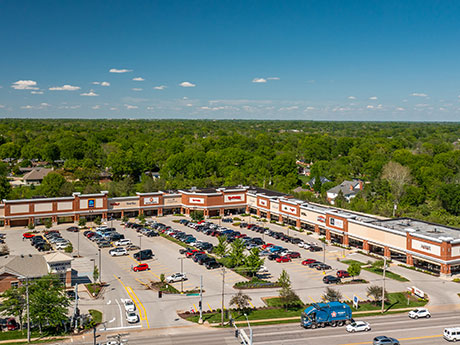By Grant Mechlin, Sansone Group
The St. Louis retail market showed impressive resilience in the second quarter of 2024, thanks to strong consumer spending and growing demand across various sectors. Despite challenges such as higher borrowing costs and persistent inflation, the market tightened considerably, with availability dropping to a record low 4.8 percent and well below the five-year average, according to CoStar.
This strong absorption has persisted for nine consecutive quarters, highlighting the market’s ongoing strength. A major factor behind this is the limited new supply — only 770,000 square feet of retail space was added in the past year, with nearly all of it quickly absorbed, according to CoStar.

This scarcity has fueled development, especially in areas like quick-service restaurants, banks and discount retailers, as tenants are forced to explore new construction as the only viable option to combat a lack of supply in the market.
Meanwhile, the overall prices of goods and services in the St. Louis area saw a 3.4 percent rise over the past year, according to the Consumer Price Index. While food costs came down slightly, there was a 5.4 percent increase in energy costs and 4.3 percent for all other consumer expenditures.
Despite the continued inflation concerns, strong consumer spending has supported retailer demand for additional real estate in St. Louis. The retail market’s performance in the second quarter underscores its ability to thrive even in a challenging economic environment.
Rent growth, vacancy
Continued tight market conditions have given landlords greater pricing power. The highest rental rates are found in areas west of downtown along I-64, from Mid County to St. Charles County, where high median incomes and strong purchasing power contribute to high real estate demand and above-average rent growth.
Core markets like Mid County and St. Charles have vacancy rates in some cases 50 percent lower than the rest of the region, underscoring the high demand in these areas. This record-low vacancy level has forced record-high average rental rates across the region, up over 3 percent this year alone.
Active retailers
Consumer spending remains strong, driving higher sales and attracting developers. Restaurants continue to be the most active sector, with dining out growing year-over-year nationally. The retail banking sector also continues to be very active. Both user types are particularly attractive to developers, as these businesses pay premium rates.
Notable expansions include:
• Syberg’s Family of Restaurants: Expanding its Twisted Tavern concept in St. Peters in fall 2024 and signed a new lease for a new Mexican concept at Dierbergs Crestwood Crossing
• Shake Shack: Signed recent lease for a new location in South St. Louis County at Plaza at Sunset Hills
• Chipotle: Continues to grow steadily, with plans for multiple new stores, including further expansion in a new South County location
• Drive-thru coffee concepts: Brands like Starbucks, Dunkin’, 7 Brew and Scooters Coffee are expanding with smaller footprints across the region
• Retail banking: Chase Bank, First Bank and several regional credit unions continue to expand and/or reposition to new, smaller prototypes with an emphasis on technology
Development efforts
High construction labor and material costs continue to make new development challenging as rents struggle to keep pace with the higher returns needed by developers. Some retailers never fully recovered from the
COVID-19 pandemic and a number of national retailers have closed, such as Bed Bath & Beyond and David’s Bridal being notable examples.
However, absorption has been strong for these vacancies, which has led to a focus on spaces being redeveloped and repurposed. For instance, Slumberland took over 53,000 square feet in Sunset Hills, previously occupied by Bed Bath & Beyond and David’s Bridal.
Until costs decrease and existing vacancies are fully absorbed, new development will continue to lag. Over the last 12 months, 770,000 square feet of new construction was built, of which only 40,000 square feet remains available. New construction currently planned is 92 percent below the 10-year average, according to a recent CoStar report.
Investment sales
Investment sales in retail have seen a slowdown. After record sales of over half a billion dollars in both 2021 and 2022, there has been a nearly 50 percent drop in the last 12 months, according to CoStar. Higher interest rates have driven this slowdown, with rising cap rates following suit. However, as demand in the hottest sectors like industrial and multifamily has cooled slightly due to less attractive pricing metrics, investors have begun to renew interest in retail. Better pricing in retail should afford buyers higher yields over the next 12 months.
Conclusion
As we entered the second half of 2024, the St. Louis retail market remained in a strong position despite the continued headwinds of higher borrowing costs and construction pricing. With minimal space availability and continued demand driving development, market fundamentals are expected to remain favorable for property owners. The dynamic shifts in food, energy and shelter costs will continue to play a crucial role in shaping the retail landscape in St. Louis. Overall, the retail market should remain strong and continue to improve here in St. Louis for the near future.
Grant Mechlin is executive director of retail and multifamily services for Sansone Group. This article originally appeared in the September 2024 issue of Heartland Real Estate Business magazine.


